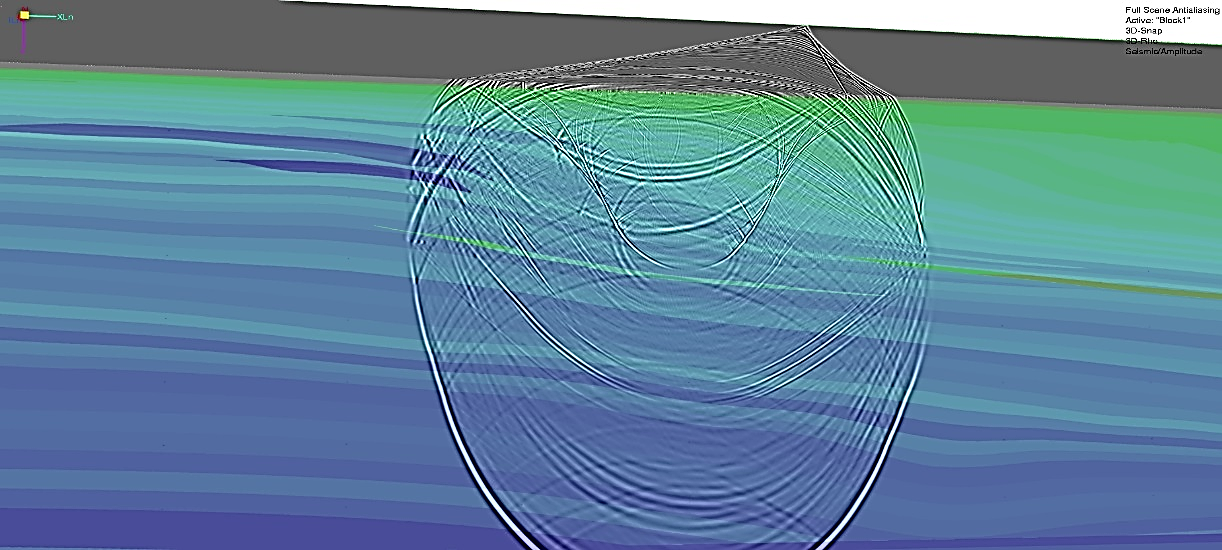
The main objective of ENERXICO´s work on oil and gas energies is to expand the impact of HPC in seismic imaging by analysing and comparing state-of-the art modelling and inversion software, applied to realistic scenarios relevant to Mexican oil and gas prospects. The recent announcement of two significant oil discoveries offshore Mexico in May 2020 by Repsol, the European leader of ENERXICO´s work on oil and gas energies, combined with a third deep water exploration well offshore Mexico to be drilled in 2020 reinforces this objective and highlights the importance of what the project´s research can do to reduce risk in this sector.
Oil and gas discovery wells in complex geological setting like deep-offshore Mexico rely on the strong collaboration of a multidisciplinary team of experts in mathematics, geophysics, geology and IT. In exploration and productions projects, sources of uncertainties are numerous, including petrophysical, structural as well as geological uncertainties. Structural uncertainty, which directly impacts hydrocarbon volume uncertainty and well landing uncertainty, and therefore production forecast and drilling uncertainties, is directly linked to geophysics, which therefore plays an important role in helping to reduce it.
Geophysics is also the most demanding area in terms of computational resources, especially for subsurface imaging due to the rigorous simulation of the physics of mechanical wave propagation in a viscoelastic medium. HPC and next generation computing like Exascale, a thousand times more powerful than current supercomputing capacities, are therefore crucial. The main reason is that today’s algorithms tend to limit the approximations used in the equations to represent as accurately as possible the real wave propagation phenomenon, substituting acoustic propagation by viscoelastic wave propagation for example, testing different scenarios of earth model structural geometry and properties.
One example of an HPC application in geophysics is the new workflow for the assessment of a complex overburden in the seismic response developed by Repsol TechLab Geophysics. Complex overburden impact on seismic wave propagation has been known for many years and it is accepted that a complex overburden can significantly disturb amplitudes and therefore its derived attributes. Such workflow requires integrating state-of-the -art finite difference forward elastic seismic modelling as developed in ENERXICO, seismic imaging and quantitative interpretation. To carry out such an integrated study, an elastic earth model must be built in depth, using a calibrated background trend, simulated complex overburden and reservoir properties with different fluid content with elastic components such as P-wave, S-wave velocities and density, respecting the complexity of the geological setting and the measurements at wells. Then full wavefield elastic variable density finite difference seismic modelling algorithm is used to generate a synthetic seismic field with properly spaced shot gathers, to be utilised as input for appropriate seismic processing testing (multiple attenuation, seismic tomography workflow and Full Waveform Inversion) as well as for quantitative interpretation.
Simple 2D models can provide a significant input for the interpretation of QI attributes and their relationships with true reservoir parameters but they are much more realistic if performed in 3D. However, this significantly increases the computation time of simulation, which is why HPC computation, especially in Exascale, is needed now more than ever. As ENERXICO´s work in seismic imaging is tied to the HPC capabilities it is using, the arrival of Exascale computers in Europe will surely lead to better and more accurate results.
